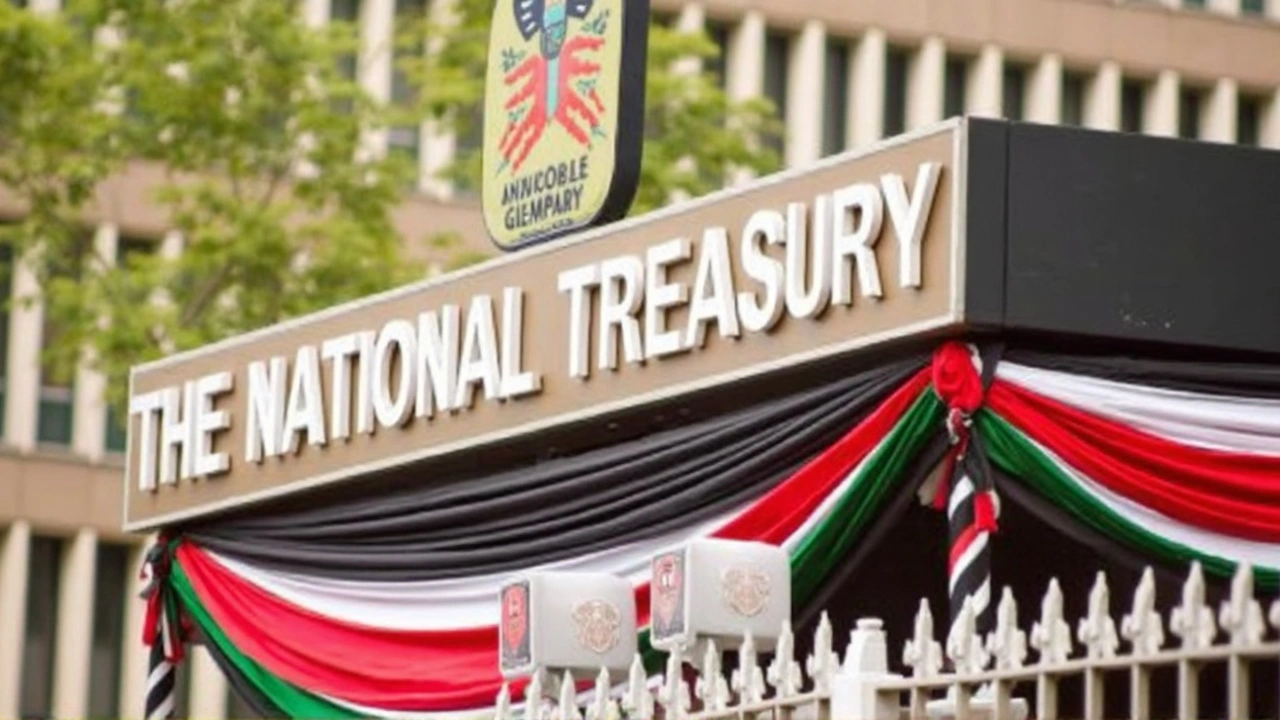MPs Approve Sh405 Billion for Counties in 2025/26
Kenya’s National Assembly just gave counties a major financial boost. Lawmakers approved a county allocations package of Sh405 billion for the 2025/26 financial year. That’s not all—the package also throws in an extra Sh69.8 billion as additional funds to support various county projects and cover special needs. This is no small increment. The approved total marks a 4.5% increase—Sh17.7 billion more—over the last fiscal cycle. For local leaders, it’s the kind of budget that could finally address persistent gaps in service delivery.
Where is all this money going? For starters, the Kenya budget breakdown isn’t just about throwing more cash in the pot. The Budget Policy Statement (BPS), which guides where and how the money is allocated, spells out detailed limits. The lion’s share of Sh2.4 trillion goes to the Executive, while Parliament gets Sh49.5 billion and the Judiciary Sh26.7 billion. But the new county allocation is being celebrated for giving regions outside Nairobi a real footing when it comes to resource distribution.
Focus on Equality and Accountability
The new BPS framework isn’t only about baseline numbers. A big talking point has been the Equalization Fund, which is set at Sh7.9 billion this cycle—plus another Sh3.5 billion to settle long-standing arrears. These funds are aimed squarely at marginalized areas: think remote northern counties, arid zones, and regions with chronic water shortages. The Fund is designed to help level the playing field with better access to basic health, education, and infrastructure.
Putting money in isn’t the only focus. The BPS flagged Sh3 billion to ramp up public participation—essentially making it less of a box-ticking exercise and more of a real exchange between citizens and their local governments. Oversight is getting a leg up too, with the Auditor General’s office seeing an allocation of Sh8.7 billion. That increased funding is expected to help track and curb misuse of public funds—a problem that’s kept cropping up and triggered public outcry in the past.
The 2025/26 National Assembly allocations and spending ceilings set a tone for the year ahead. There’s a noticeable push for transparency and direct engagement at the county level, reflecting a national sentiment that wants not just bigger budgets, but smarter, more targeted spending. These adjustments may not solve all issues overnight, but the signal is clear—local governments are getting a beefed-up role and more resources to actually make a difference in their communities. Counties that once felt left behind could soon see the impact of these changes on the ground.




It is incumbent upon the discerning observer to recognize that the recent parliamentary endorsement of a Sh405 billion allocation for county administrations constitutes a laudable, albeit modest, manifestation of fiscal prudence; the incremental 4.5 percent augmentation, while commendable, nevertheless intimates a strategic recalibration of intergovernmental equity. This development foregrounds the exigency of calibrated resource distribution, ensuring that peripheral jurisdictions are no longer relegated to the peripheries of national development. The earmarked Sh69.8 billion supplementary tranche further exemplifies a commendable commitment to addressing idiosyncratic local exigencies. One must, however, remain circumspect that such allocations be dispensed with rigorous oversight to preclude the perennial malfeasances that have historically plagued public finance.
What a joke the budget is
The passage of the Sh405 billion county allocation heralds a transformative moment for Kenya's local governance. It signals that the policy architects are finally attuned to the nuanced needs of diverse communities across the nation. By channeling resources into under‑served regions, the government is laying the groundwork for more equitable access to health services. Moreover, the additional Sh69.8 billion earmarked for special projects will empower counties to address infrastructure deficits that have persisted for decades. Communities that once felt sidelined can now anticipate the construction of vital water supply systems, which will dramatically improve public health outcomes. The emphasis on public participation, as reflected by the Sh3 billion allocation for civic engagement, underscores a genuine commitment to democratic inclusion. This investment in participatory mechanisms promises to transform budgeting from a box‑checking exercise into a vibrant dialogue between citizens and their elected officials. The bolstered funding for the Auditor General’s office is a prudent safeguard that will enhance transparency and accountability at every administrative tier. Such oversight is essential to curbing the entrenched misappropriation of public funds that have eroded public trust in recent years. The Equalization Fund, now standing at Sh7.9 billion with an additional Sh3.5 billion for arrears, offers a lifeline to marginalized counties struggling with chronic water scarcity. By directing these resources to arid zones, the government is taking a decisive step toward mitigating climate‑induced hardships. The collective impact of these measures is likely to reverberate through local economies, spurring job creation and fostering sustainable development. As counties receive these enhanced allocations, we can envision a ripple effect that nurtures entrepreneurship and improves livelihoods. While challenges remain, the proactive stance taken by the National Assembly serves as a beacon of hope for countless Kenyans. It invites every stakeholder to rally around a shared vision of prosperity, inclusion, and good governance. Ultimately, this budgetary overhaul has the potential to rewrite the narrative of regional disparity into one of collaborative progress.
Sure, throwing more cash at the problem sounds nice on paper, but history tells us that money alone doesn’t cure systemic neglect. The real issue is the entrenched bureaucracy that siphons funds before they reach the people who need them. I doubt the extra Sh3 billion for public participation will survive the next political cycle. Let’s not be fooled into thinking this is a panacea. We need structural reform, not just a bigger checkbook.
Wow this budget looks like a big step forward for the counties 🙌 but you can see a few things that could be even better 😊. The allocation for the Equalization Fund is a bright spot, yet the distribution formula still feels a bit hazy🤔. I think more clarity on how the Sh69.8 billion extra will be split among projects would help locals trust the process 😊. Also, it would be great if the Auditor General’s new budget came with more independence, not just more money 😅. The focus on public participation is encouraging, but the real challenge will be getting voices from remote areas heard 📢. Overall, kudos to the parliament for taking a step, but let’s keep the conversation going 🙏. Hope the counties can turn these funds into real change on the ground! 🏞️
Your optimism is spot on, and I truly believe that with the right oversight, these funds can make a tangible difference. The extra allocation for community engagement is exactly what we need to empower citizens. Let’s keep pushing for transparent implementation so that every shilling counts.
They finally gave the counties money and the media is acting like it’s the end of the world
I see the numbers and they’re definitely a boost for local projects. It’ll be interesting to watch how each county prioritizes its spending. Hopefully the public participation funds actually get used.
Honestly this budget is a mixed bag the extra cash looks shiny but the underlying fiscal framework still has cracks. The Equalization Fund is a bright idea, yet without proper audit it might just be another pipe dream. Plus the 4.5% increase is modest when you consider inflation and the rising cost of infrastructure. We need more than just symbolic gestures, we need robust policy levers. In short, let’s not get carried away by the headline numbers.
Finally some money finally for the people of Kenya, let’s hope this isn’t just a temporary fix and we see real progress!